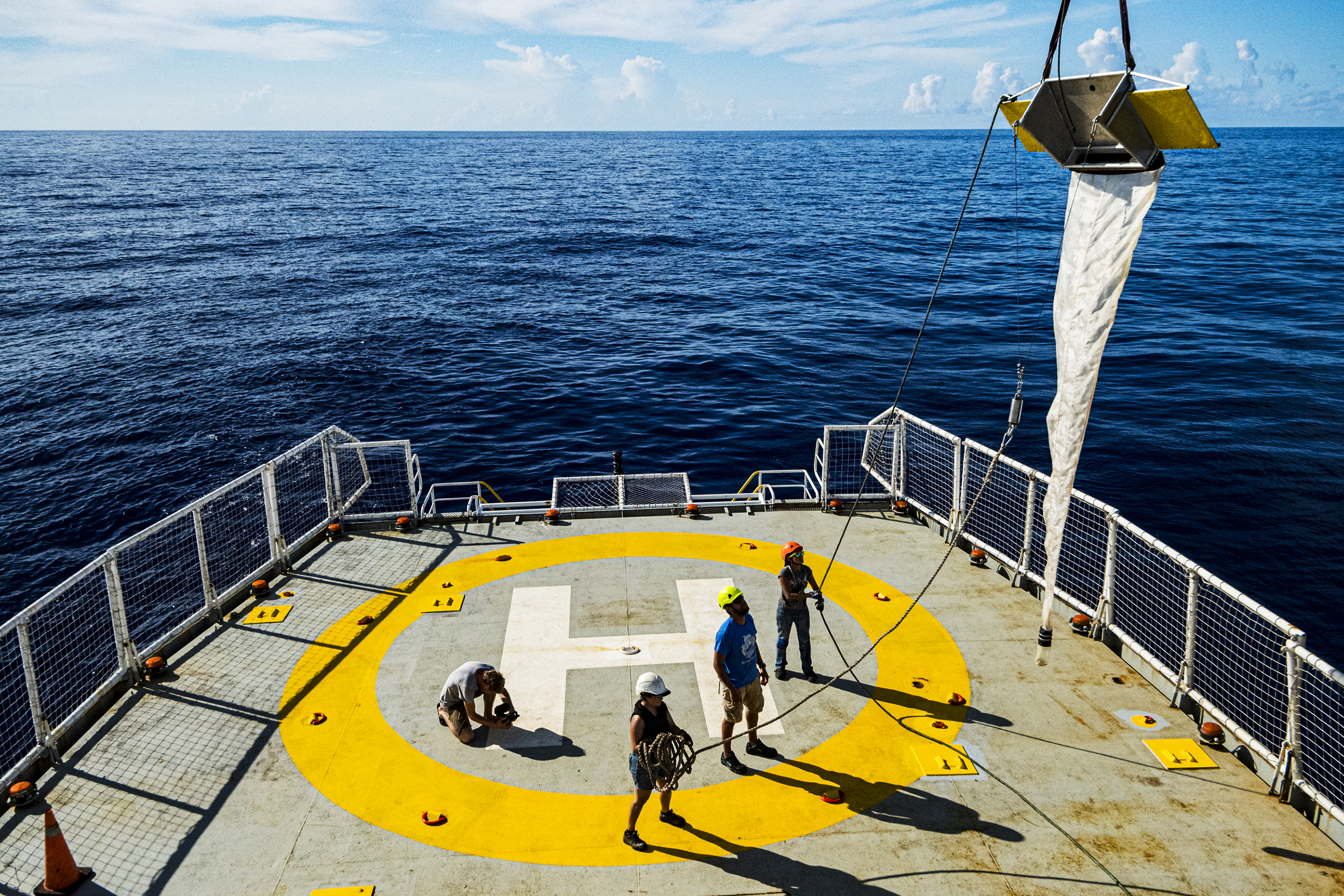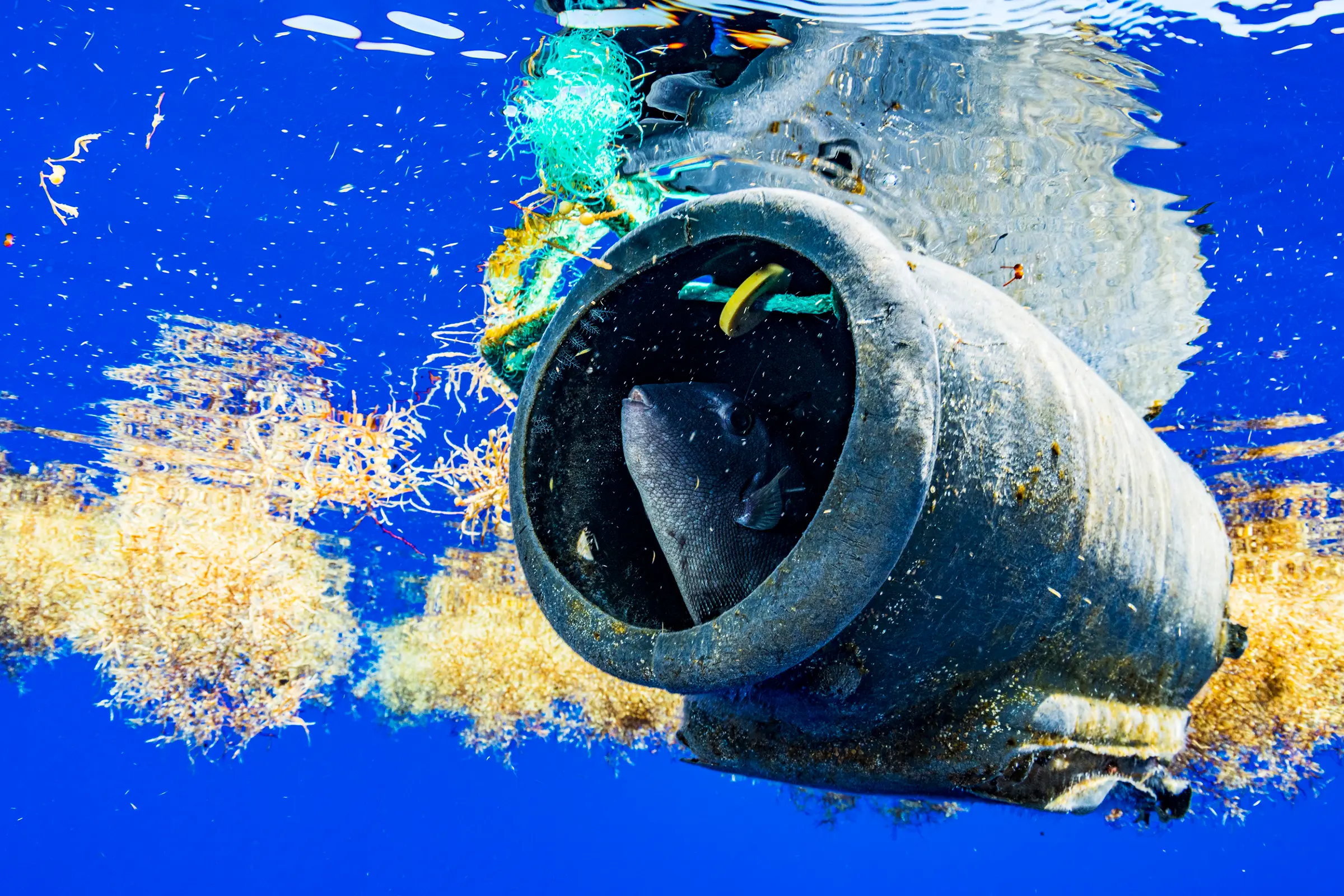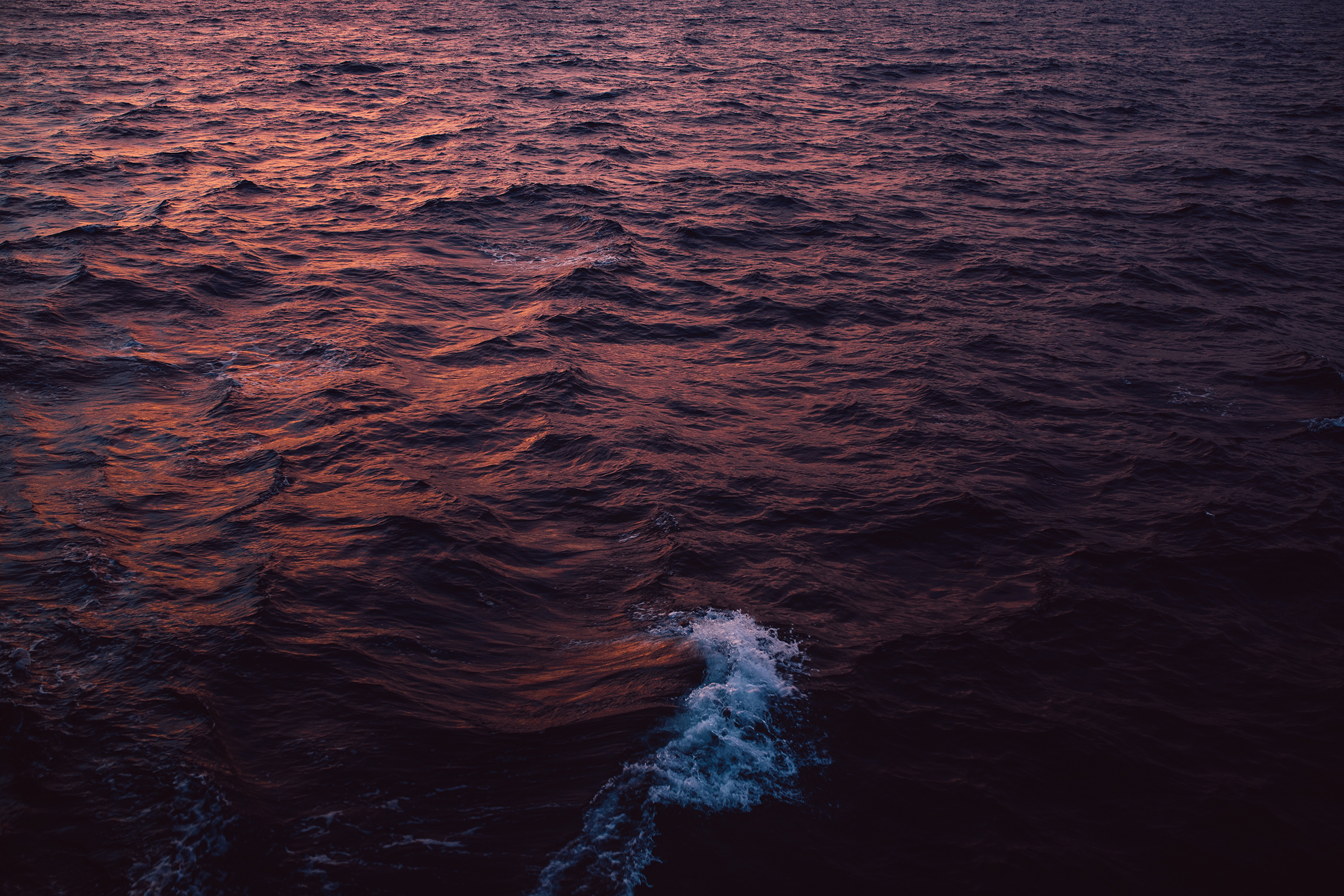
Our seas are in deep, deep trouble. They house an extraordinarily diverse eco-system of marine life, and are crucial to the well being of land-based ecosystems. And as of this moment, they may as well be the Wild West for corporations and governments to pillage as they please. Deep sea mining, lawless over-fishing, an outpouring of plastic and chemical pollution, shipping noise, disruption of floating seaweed beds, and changing temperatures caused by global warming are just a few of the clear threats to our seas. The high seas make up 61% of the ocean, and 73% of its volume. They matter to our whole planet and our future depends on them.
Enter Greenpeace, the world’s largest independently funded environmental NGO. As part of the worldwide initiative to protect 30% of the worlds oceans by 2030, Greenpeace set sail this summer on their largest vessel, the Esperanza, to explore the bodies of water most vulnerable to corporate and governmental attack. They would enlist various scientists, campaigners, influencers, and media outlets to put together a comprehensive, scientifically backed summary to put pressure on the UN in order to prove high seas sanctuaries were necessary and vital. They knew that in order to convince them, they would need proper data and research to back up their claims.
I was asked to join a leg of their year-long expedition this summer. We would be traveling through the Sargasso Sea, a place I had never heard of before. I was wary for many reasons, one being that it was with Greenpeace, an NGO I had seen do wonders in the world of the environmental movement, and also, one I had seen make mistakes over the years. I was also wary because as a proper millennial with cynical views on real accountability and because I have seen too many influencers with the promise of change, I had been left to wonder many times what real change they had been able to accomplish. I decided to join alongside my photographer friend Emory Hall, with the understanding that we would be following this mission through until the UN had made their final decision in the spring of 2020. We would not let the exposure and publicity garnered come and go as quickly as most “activist” hype does.

Neither of us knew much about what we were getting into. The Sargasso Sea houses one of the most diverse ecosystems of any ocean, thanks to its abundant population of Sargassum seaweed. We were told that due to the natural currents surrounding the Sargasso, it could potentially be a vortex for discarded waste to collect, similarly to the infamous Pacific Ocean garbage patch. We packed our bags, flew to Bermuda, boarded the Esperanza, and as we watched land drift away into the horizon, we knew something was about to profoundly impact our lives. We just couldn’t have known how much.
Below are my edited notes and journal entries written along the way:
We’re sitting in the mess room. Our thighs sticking with sweat to the upholstered benches, florescent lights beaming above us. One by one, we introduce ourselves: my name is _____. I’m from the country _____. My job position is _____.
Seventeen different accents fill up the space: France, Mexico, Spain, Poland, Croatia, Brazil, the United states of America, Panama, South Korea, Argentina, Italy, Bulgaria, England, Austria, Germany, Canada, and Bermuda. All swaying together thousands of miles away from any continent.

One of the lead campaign officers explains to us the various ways in which we’ll be collecting data while on board. The two female scientists from the US will be testing the temperature of the sargassum seaweed patches we find in order to understand more about sea turtle life, and how the sargassum could possibly act as an incubator to help them grow. The two underwater photographers from Canada will conduct night dives in which they’ll descend to a maximum depth of 100ft to capture images of various species and creatures inhabiting the sargasso. Another female scientist from Spain will be engaging in a practice known as EDNA sampling, conducting a specific testing of seawater to be able to tell what species have crossed that exact location in the past two days. We may not see the sharks or the whales or the jellyfish swimming under our ship, but the EDNA will tell us if they were there or not. Lastly, we’ll be utilizing a technology called the “manta trawl” where a streamlined, fine meshed net is dragged atop the surface of the water alongside the Esperanza, to measure just how many microplastics exist in the Sargasso.
Wow. Deep breath. Emory and I head outside. Staring at the vast blanket of blue ahead of us, the baking sun tanning our legs, the fresh, clean air filling our lungs, its difficult to imagine this paradise being declared a “climate emergency.” It looks like utopia; there are sperm whales breaching, sea birds cawing. Sure, the occasional beaten up flip flop graces the surface of the water… or a floating plastic bucket will bob up and down in our wake… but it’s not THAT much trash. And even more, the ocean is gigantic.
We made our way up to the science lab, where our Bermudian scientist was sorting through that days trawl. we had expected to see some plastic, but I don’t think either of us knew just how bad it was going to be.
In order for a microplastic to be considered micro, it must be under 5mm in size. Lined up along graph sheets, he had found over a thousand pieces that first day. A thousand pieces of pin-dot sized remnants of toothpaste tubes, dishwasher detergent bottles, sandwich bags, yoga pant fibers, iPhone cases, coffee cup lids … a thousand pieces that could have come from one bag of my own trash alone. A thousand pieces that were collected in less than an hour, skimming roughly only two feet in diameter of ocean surface. A thousand pieces that will live on to haunt the stomachs of my future children when they ingest wild fish. A thousand pieces that will never decompose. A thousand pieces that rattled a hopelessness into me. A guilt so profound, I’m still struggling with it today.

We silently walked back to our cabin. Staring at each other, words would never be enough.
We both pull out our sunscreen to calm our sunburned skin. Emory points to hers. “Reef safe.” I point to mine. “Reef safe.” She begins to tear up. “We call it reef safe, sure, because there are no chemicals in it that will bleach the reefs, or cause acidification. But I ordered it on Amazon. It came wrapped in two plastic bags, and the tube is made of plastic itself. How in the world can we actually deem this reef safe?” I stare at the bottle in my own hand. I had thought of this a week before as I trolled the supermarket stocking up on my needs for the boat. Toothpaste, deodorant, sunscreen, shampoo, conditioner, snacks wrapped in single use wrappers … you get the gist. Here I was, about to document plastic pollution in the ocean, and yet, I was financially supporting companies that produce plastic themselves, while also contributing my own stock of soon-to-be-micro-plastics to the mix.
A few days later, one of the chief campaign officers who had been aboard Greenpeace’s expedition to the great Pacific garbage patch (an area a few hundred miles off the coast of Hawai’i known to host a floating island of plastic twice the size of Texas) came to us and said that already they had discovered more plastic in the Sargasso than they had in the great pacific garbage vortex.
How is it that a sea so unknown to the world could host one of the largest known collections of micro sized human-created waste?
When asked what we could do about cleaning up the oceans, one of the scientists said that as of right now, no technology exists to be able to do so at the scale needed. How are we supposed to clean up 71% of the planet when a piece of micro-plastic can be found every 3 seconds?
I try to always remain positive. Even in the most dire of situations, because at the end of the day, what else do we have but hope?
Being on that ship, however, and watching the images of inky squid, flying fish, and eels fill the monitors of our underwater photographers juxtapose the images of the plastic we had collected had me feeling all types of hopeless.
How do we even begin to change a global culture of instant gratification consumerism for the sake of our planet and our future generations? How do we alter a culture of apathy when this so-called “climate emergency” isn’t visibly affecting the lives of the developed countries that host many corporations who are responsible for much of what needs to change? How do we bring the topic of ocean importance and conservation into land-locked areas and ask people to care?

For a few days now, we had been sharing toilets and showers with 33 people from over seventeen countries. We watched them sweat in full bodysuits atop cranes, we watched them man the control and engine rooms to keep us all safe and afloat, we watched them navigate the high seas with precision and skill, we watched them fix leaking sinks, chop onions, fix tech mishaps, drive ribs through high swells. All with a certain grace, and a certain unrelenting levity. It seemed remarkable to us that despite the suffering and injustices they had witnessed in their lives working for Greenpeace and elsewhere, they still rose each morning with a sense of hope.
It is no secret that there is a hierarchy when it comes to who we celebrate as activists. I am in a position where, if seen picking up a piece of trash from the side of the road, praise is showered upon me. It is a direct reflection of our society’s obsession with fame, and how we love glamorizing advocacy work if the appeal is sexy enough to trend on social media. Perhaps I am more cynical than most when it comes to this topic, but the distribution of acknowledgement is extremely imbalanced in the world of activism. The people who are on the ground day in and day out offering up their services, trades, skills, patience, resiliency, livelihoods, and bodies are the ones we should be focusing on. They are the ones we should ask to be in service of and to ask how we can support their missions.
It seemed very apparent to us that in addition to the definitive action steps we can all take to better conserve our oceans, the crew wanted us to know that without addressing the emotional issues within our society, no real change could occur.
So we asked them what we could do more of, on a basic level.
“Care more.”
“Slow down, sit next to your kids, don’t stare into the phone. sit beside someone else, whether you’re doing the same thing or not, and enjoy the scene. Just step back to have feelings. don’t fall into the temptation to look at everything instead of just being present in the moment. every passing second is a lost one. Refine your needs. Revalue your time”
“Become more aware that our everyday actions are directly affecting people all over the world.”
“One of the biggest issues is we have very high standards and were not very forgiving of each other. We tend to be hard on each other and we’re not very good at working together”
“I would ask everybody to be gentle … because you cant regret being too kind … it really would help so much with everything. If you just make the effort [to be kind] “.

Our trip was about to end. Land found its way back onto the turquoise horizon, and goodbyes were about to ensue. But before we left, we needed action steps. We needed to know exactly how to change the tides of our future. For myself, I am committed to following the suggestions below.
1) I will be nagging every corporate supermarket in my hometown to reevaluate just how many single-use plastics they stock in their stores, and to source products that are not plastic-based. I will ask them to eliminate plastic bags and to use alternatives whenever and wherever they can.
2) I will be calling my local representatives and local corporate CEO’s on repeat about their responsibility to ban certain products from our cities. (By the way, this is not an impossible feat. San Francisco airport announced that it will be the first airport in the world to ban the sales of plastic water bottles.) We can do this with just a little bit of non-violent pressure.
3) I will be more conscious with how I approach single use plastics by replacing some of them with easily reusable products: stainless steel water bottles, reusable traven utensils, less consumption of single-use plastic snacks like chips and nuts. (Fun fact: a large percentage of our trash and recycling in America is shipped overseas, often to Asia and Africa. When we assume that the water bottle we purchased will be recycled, it often ultimately ends up in the ocean because of this lack of proper waste control.)
4) And most importantly, I will be working on myself, because as our Austrian deckhand pointed out, you can’t address environmentalism without recognizing the intersectionality that exists between all forms of social and environmental injustice.
We have until march of 2020 to convince the UN to protect our seas. If all of you who read this change your lifestyles just a tiny bit, if you put pressure on the right corporations and politicians, and if we all continue to find a little more space in our hearts for kindness, we may just be able to sway our global leaders to conserve 30% of our oceans by 2030, and in turn, continue the evolution of the human race.
More Must-Reads from TIME
- Cybersecurity Experts Are Sounding the Alarm on DOGE
- Meet the 2025 Women of the Year
- The Harsh Truth About Disability Inclusion
- Why Do More Young Adults Have Cancer?
- Colman Domingo Leads With Radical Love
- How to Get Better at Doing Things Alone
- Michelle Zauner Stares Down the Darkness
Contact us at letters@time.com